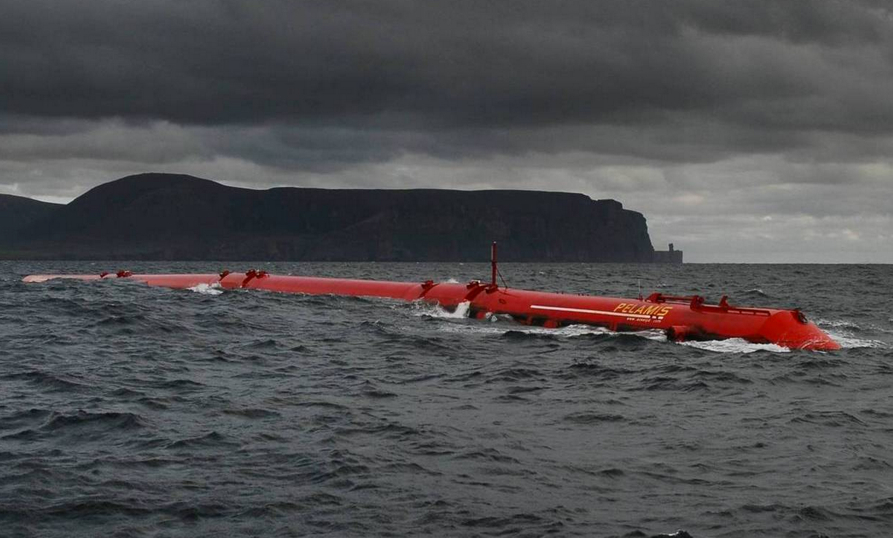Just weeks ago, Michael Ottaviano, managing director of Carnegie Wave Energy, flicked the switch to start Australia's first commercial-scale, grid-connected wave energy project. The opening ceremony capped off 10 years of research and prototype building, followed by a year of testing, once the first 240kW CETO 5 unit was installed offshore. During a final shakedown test, this unit worked flawlessly for more than 2,000 hours before a second unit was submerged nearby.
The $100 million project now sends power to Australia’s HMAS Stirling Naval Base, which is located on Garden Island in Western Australia. It will also sell fresh water to the base once its desalination plant is fully online. After explaining that a third unit will be delivered soon, Ottaviano told RenewEconomy, “The integration of multiple wave energy convertors is critical to demonstrating the principles of future CETO wave farms."
But this is just the beginning. When Ottaviano looks into the future, he sees wave energy facilities growing as large as today's wind farms, "So, it's actually harder to do it with two or three than it is with 100 because the variability is quite high - if you've got 100 units, it's much to easier to control and the footprint's very small."
Able to operate in a variety of water depths, swell directions and sea-floor conditions, the Carnegie unit is different from other wave energy devices because it's fully submerged under water and safely protected from storms overhead. Moving in sync with the ocean’s waves, a Carnegie buoy powers tethered seabed pumps that push high pressure sea water onshore. Once onshore, this water then drives hydro-electric turbines generating 740kW of zero-emission electricity. The submerged buoys have an added advantage: they're out of sight and avoid the NIMBY debates that have erupted over offshore wind farms.
Regardless of the opening day fanfare, most wave energy veterans are professionally wary. This industry has severely disappointed expectations. Many of these hardy machines haven't survived the pounding sea or a crippling lack of financing. So despite industry-wide investment, wave energy has struggled to take off.
Wave energy technology sinks
This calamity seems to hit machines that ride on top of the waves. Recently, Pelamis Wave Power, one of the first companies with a working device in the water, just entered bankruptcy because it was unable to secure new financing. At the time, the company was testing an updated version of the P1 Pelamis, which had originally floated off the coast of Portugal in 2008. New components had reduced wear and tear, and new algorithms had maximized energy production, but the company ran aground when E.ON, the large German energy firm, pulled the plug on their partnership. Founder and chief executive Richard Yemm lamented, “We need the big industrial skills that the big companies have."

Last July, Ocean Power Technologies, having designed a buoy with an upper structure that bobbed 30 feet above the water, gave up on plans to develop a 62.5MW project off of Australia. The developers of what once was billed the “world’s largest” wave energy project killed the it because they decided that it wasn't commercially viable. Now OPT is facing a class action lawsuit in its home state of New Jersey that alleges that the wave developer made false and misleading disclosures.
Several months before OPT sank, Australia’s Oceanlinx was placed in receivership. The company went belly up after a towing accident at sea delayed the final installation of its 1MW GreenWave wave energy converter. It had started to sink en route to its destination south-east of South Australia. Oceanlinx had wanted to install the 24m by 21m, 3,000 ton unit 3km offshore. Instead, the heavy machine, with a simple base of reinforced concrete supporting a large above-water turbine, was towed and left to sit unused in shallow water.
Still afloat, and trying to bring down costs, Carnegie is going big with its new CETO 6 buoy. It will be four times larger than today's model. According to Ottavino, "If you built a one-megawatt coal-fired power station, it would be the most expensive in the world. Likewise with wave energy - we need to be building 20 megawatts, 50 megawatts, 100, 200 megawatt power stations and we would be cost-competitive."


